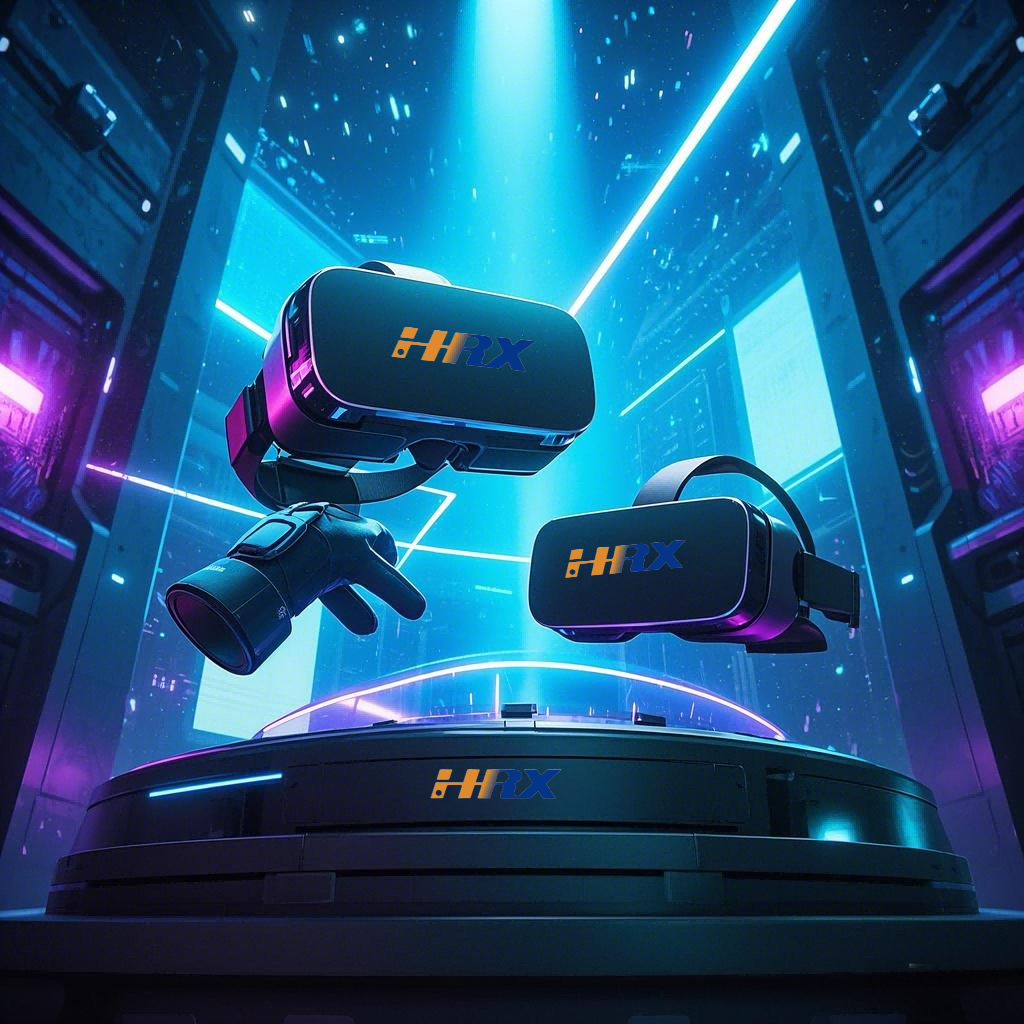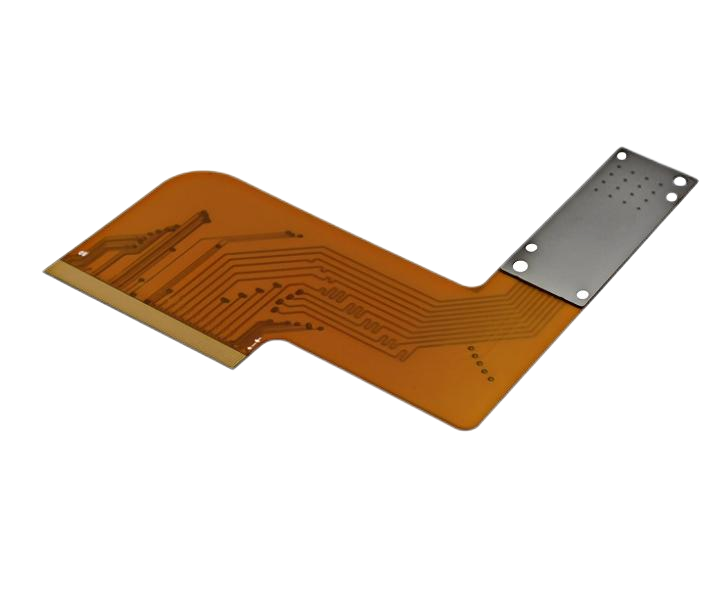Search
Decoding the Crucial Role of FPC in VR/AR Production: Unveiling the Technical Intricacies
- Jan 04,2025
-
Share
In the pulsating heart of the Virtual Reality (VR) and Augmented Reality (AR) technological revolution, where every millisecond and millimeter matters, Flexible Printed Circuits (FPCs) have ascended to a position of paramount importance. These unassuming yet highly sophisticated components are the silent enablers, the very backbone that sustains the awe-inspiring immersive experiences we relish in the VR/AR realm.

An In-depth Exploration of FPC Architecture
FPCs, at their core, are a marvel of modern microelectronics. Comprising a flexible substrate, typically polyimide – renowned for its exceptional thermo-mechanical properties, withstanding temperatures that can soar in the vicinity of 300°C without significant degradation. This heat resilience is indispensable when nestled in close proximity to power-hungry application-specific integrated circuits (ASICs) and high-performance graphics processing units (GPUs) that VR/AR devices rely on. Printed onto this substrate are ultra-fine copper traces, often with line widths and spacings measured in micrometers, meticulously etched using advanced photolithography techniques. These traces form the intricate circuitry, capable of conducting electrical signals with remarkable precision and speed.
Mastering the Design Dilemma with FPC Ingenuity
Space optimization is a Gordian knot in VR/AR device engineering. The pursuit of ergonomic elegance, compact form factors, and potent computational capabilities demands ingenious solutions. FPCs, with their pliable nature, step into the fray as the ultimate problem-solvers. Designers, armed with state-of-the-art computer-aided design (CAD) software, embark on a digital ballet to choreograph the layout of FPCs. In a VR headset, for instance, the FPC must artfully interconnect the micro-OLED display, with its pixel densities pushing the boundaries of human vision, to the motherboard housing the complex array of processors. This requires serpentine routing, carefully avoiding mechanical obstructions and minimizing the risk of signal crosstalk through techniques like differential pair routing. By strategically placing ground planes and employing shielding vias, electromagnetic interference (EMI) is tamed, ensuring a pristine signal path for the torrents of data streaming between components.
Safeguarding Signal Integrity: The Lifeline of Immersion
In the hyper-realistic landscapes of VR/AR, where split-second delays can shatter theillusion, signal integrity reigns supreme. High-definition video feeds, real-time sensor data from inertial measurement units (IMUs) and depth cameras, and user interaction commands all converge and demand flawless transmission. FPCs are engineered with a suite of advanced features to meet this Herculean challenge. Differential signaling, a cornerstone technique, employs paired conductors that carry complementary signals. This not only mitigates crosstalk but also bolsters the signal-to-noise ratio, allowing data to hurtle through the circuitry at multi-gigabit speeds without succumbing to distortion. Complementing this, electromagnetic shielding in the form of metalized films or ferrite-based composites is judiciously integrated. This invisible armor wards off external EMI sources, be it from nearby wireless modules or the device's own power delivery network, safeguarding the delicate signals that underpin the seamless user experience.
The Precision Symphony of FPC Manufacturing for VR/AR
Crafting FPCs for the exacting demands of VR/AR is akin to conducting a precision symphony. It demands a manufacturing ecosystem bristling with cutting-edge technology and a workforce of maestros. The etching process, the crucible where circuit patterns are born, is executed with micron-level accuracy. Ultra-precision etching machines, calibrated to the nth degree, ensure that the copper traces adhere to the design specifications with zero tolerance for error. A single micron deviation in line width can precipitate impedance mismatches, leading to signal reflections and degradation. Quality control is a multi-tiered fortress. Visual inspections under high-power microscopes, augmented by automated optical inspection (AOI) systems, scour the FPC surface for any blemishes – from microscopic scratches that could initiate corrosion to etching anomalies that might spawn short circuits. Electrical testing follows, with instruments measuring parameters like insulation resistance, capacitance, and signal propagation delay. Only those FPCs that emerge victorious from this gauntlet of tests are deemed worthy of gracing the final assembly line of VR/AR devices.
Conquering Environmental Extremes: FPC's Endurance Test
VR/AR devices are intrepid adventurers, traversing a gamut of environments. From the climate-controlled comfort of a living room gaming session to the harsh industrial battlegrounds where AR smart glasses aid in complex manufacturing processes, FPCs must be unyielding. In humid climes, moisture ingress is a mortal enemy. To combat this, hydrophobic coatings, often silicone-based polymers, are applied, forming a microscopic shield that repels water molecules and prevents corrosion of the delicate copper traces. In industrial settings rife with vibrations from heavy machinery and temperature swings that can span from sub-zero to sweltering highs, FPCs are fortified. Vibration-damping materials, such as viscoelastic polymers, are incorporated into the design, absorbing shocks and preventing solder joint failures. Thermal management features like heat spreaders and phase-change materials are also enlisted to handle the thermal stress, ensuring the FPC remains operational and reliable under the harshest conditions.
Gazing into the Future: FPC's Evolutionary Trajectory with VR/AR
As VR/AR technology hurtles forward, morphing our perception of reality, the demands on FPCs will skyrocket. The horizon holds the promise of even more flexible and thinner FPCs, perhaps leveraging emerging materials like graphene composites that offer unrivaled electrical conductivity and mechanical strength. Manufacturing processes will embrace greater automation, with artificial intelligence-driven optimization algorithms ensuring pinpoint precision and defect-free production. As VR/AR applications diversify into sectors like telemedicine, immersive education, and remote collaborative workspaces, FPCs will need to adapt. They will have to meet the unique demands of each domain, whether it's ultra-low latency for real-time surgical simulations in healthcare or enhanced reliability for mission-critical industrial training in AR.
In conclusion, FPCs are the unsung virtuosos of VR/AR production. Their flexibility, signal integrity prowess, manufacturing precision, and environmental hardiness are the cornerstones upon which the spellbinding and immersive experiences of these technologies are erected. As we peer into the future, it's abundantly clear that the continued innovation and evolution of FPCs will be the driving force behind the meteoric growth and boundless success of the VR/AR industry.

At Shenzhen Huaruixin Electronics Co., Ltd., we pride ourselves on being a professional company dedicated to the design, production, and sales of top-notch FPCs. With a team of experienced engineers and technicians, we have been at the forefront of meeting the intricate demands of the VR/AR sector. We are always eager to engage in fruitful discussions and exchanges with both our long-standing partners and new acquaintances. Whether you have questions about FPC technology, need customized solutions, or simply want to explore the latest trends in the industry, we welcome you to reach out and start a conversation. Let's join forces and continue to push the boundaries of what's possible in the VR/AR world.

Let’s talk! We’ll provide the perfect solution for you!
-
 Huaruixin Electronics mainly produces printed circuit boards as the core business, to provide customers with one-stop solutions for FPC/PCB production, components sourcing and Assembly.
Huaruixin Electronics mainly produces printed circuit boards as the core business, to provide customers with one-stop solutions for FPC/PCB production, components sourcing and Assembly. - WHAT WE DO — PCB Design Solutions — Flex PCB Production — Components Sourcing — FPC&PCB Assembly
- PRODUCTS — Single Sided Flexible Circuits — Double Sided Flexible Circuits — Multilayer Flexible Cirucits — Rigid-Flex Circuits — FPC Assembly — PCB Assembly
- CAPABILITY — FPC Capability — Rigid-Flex Capability — PCB Capability — Assembly Capability
- Copyright © 2024 Shenzhen Huaruixin Electronics Co., Ltd. All Rights Reserved.
- Design By BONTOP


